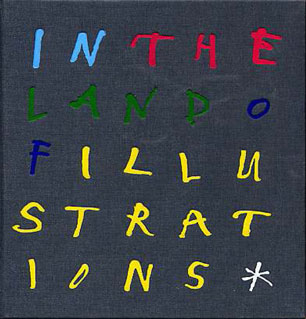In the Land of Illustrations
 In 2005 the Prince of Wales Arts and Kids Foundation (now Children and the Arts) created a drawing project for teachers and schoolchildren accompanied by a book containing work by Quentin Blake, Ludwig Bemelmans, Paul Hogarth, David Gentleman, Jaques de Loustal, Lucinda Rogers and Linda Kitson.
In 2005 the Prince of Wales Arts and Kids Foundation (now Children and the Arts) created a drawing project for teachers and schoolchildren accompanied by a book containing work by Quentin Blake, Ludwig Bemelmans, Paul Hogarth, David Gentleman, Jaques de Loustal, Lucinda Rogers and Linda Kitson.
Introduction by Quentin Blake
“Some people like definitions, but I’m not sure, though I have been earning my living by illustration for most of my life, that I would be very good at giving a definition of it. I know at least that it has to do with drawings often done to appear in books or magazines; that sometimes it accompanies words that tell a story, or tells its own story; sometimes it conveys information — think of medical illustration or natural history illustration — and sometimes, as in caricature, it exists just for the sake of comment. I could think of many other examples, and I suppose my problem is that I am never quite sure where illustration ends — and discussing where it ends can be quite a long conversation.
“At any rate, enough young people have a sense of what illustration is for a surprising number of them to write to me to ask about it and to say that they want to be illustrators when they grow up — which is why I hope that they will be interested in the challenge put forward in The Land of Illustrations. One of the uses of illustration that I haven’t mentioned is to record places and the people who live in them. Frequently, of course, these drawings are of faraway or unfamiliar places — they can give the reader/or spectator a vivid sense of what it is like to be there. But it is also possible to carry out this task for the place you live in and are familiar with, and this is what we are asking you to do for your own town or city or region. When you start to do that you may find that it too is a sort of voyage of discovery. You may want to find out how some things came to be there, or how they have changed over the years; you may want to go into buildings you have never thought of entering before; you may want to draw the Mayor (him or her) or the person who looks after the Mayor’s office.
“All the artists in this book (apart from me — I’m not an expert) have special talents for the depiction of people and places. You may find help in the work of one or other of them in deciding how you set about you own work. However, we haven’t gathered them together to suggest that you imitate them, but just to show there are many different ways of drawing the life of your own place. You may have some interesting or quite new ones of you own. We look forward eagerly to seeing what they are.”
Text by Joanna Carey
“Lucinda Rogers’ drawings appear in a wide variety of books, magazines and newspapers. She relishes the fact that the illustrator is still a viable alternative to the photographer, and she enjoys the diversity of her commissions — flying out, for example, to record the installation of a newfangled drill on an oil field, or, closer to home, travelling to Hay-on-Wye to draw the crowds at the Book Festival.
“Working entirely on the spot, she quickly gets an overall idea of how the drawing will take shape. Using coloured paper — which she selects according to subject — she starts with a bold black brush drawing — an almost abstract shape which she then works into with a pen, illuminating specific area with colour.
“Spontaneity is of paramount importance — ‘I want the drawing to reflect my initial reaction to what is in front of me — being there is all important’ she says, and she never uses a camera for reference nor does she work on the drawing after she’s left the scene.”
Joanna Carey